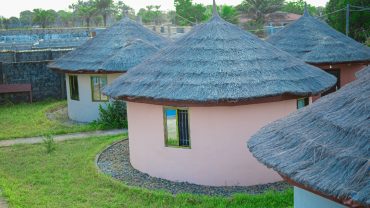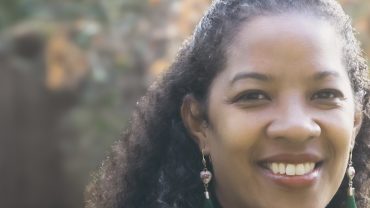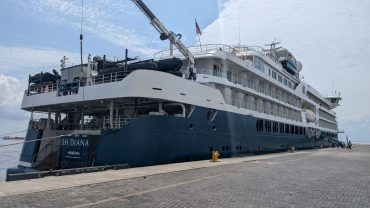“Would you like to be carried to the speedboat or do you prefer to wade?”
It’s not a question I’ve had to face before on an airport transfer — but this is Sierra Leone, one of the world’s poorest countries, and there is no bridge from the international airport to the capital city.
So, glancing down at my leather shoes, and looking along the beach at two local businessmen in suits, ties and the arms of local fishermen, I opted for a carry-out, too.
There are other ways to get from the airport, but they are a lot less appealing than a 30-minute skim in a speedboat: a tediously slow ferry that leaves only when jam-packed; an unreliable former Isle of Wight hovercraft; and the most dangerous, an airline that uses former Russian military helicopters.
You may think these matters ridiculously beside the point, considering that I’m talking about Sierra Leone, a country famed for boy soldiers, blood diamonds and precious little else. The locals, though, will quickly point out that the war finished in 2002, that there were free and fair elections, and a peaceful transition of power 18 months ago, and that a tourism boom must be just around the corner. And perhaps that’s not as crazy as it might sound.
The prewar fundamentals are still here: fabulous beaches and reliable winter sun, plus mountains and monkeys, slave forts, unspoilt islands and colourful markets. And getting to Freetown is easy, with nonstop BMI flights from Heathrow that take seven hours, only 30 minutes longer than those to The Gambia. There’s no jet lag, everyone speaks English and even the three-pin plugs are the same.
Just 14 miles south of the capital, on the magnificent powder-white, if prosaically named, River No 2 Beach, the tourist potential is glaring. It faces west and spans miles of undeveloped bay, backed by palms and lush jagged hills, and is bisected by the green water of River No 2 on its sidewind to the sea.
I was the only guest at the one development on the entire beach: a community project where the whole village chips in to run seven beachside chalets. For £34 per night you get a large room with a big veranda, B&B — they are concrete and tiles, but have batik wall hangings, a clean bathroom (no hot running water, though) and a comfy double bed with a big mosquito net.
After a day walking along the beach, swimming in the sea, talking to the fishermen, eating a fine fish dinner for a fiver and taking a boat trip to a rock pool by a waterfall, I flicked on my iPod and watched the sunset from my veranda.
I’d backpacked a lot in the 1980s and 1990s, and being here kindled powerful memories of my first forays to Thailand and Bali, Fiji and Goa. It’s not what I had expected of Sierra Leone, but there I was nonetheless, rediscovering the potency of a sunset seen from a beach hut, wafted by the subtle scents of sea spray and hibiscus, with towel and togs drying on a line, cold beer in hand.
But this place still has a way to go. For example, some of the roads in Sierra Leone are shocking — Freetown’s tarmac hardly reaches the city limits on the main road south to the beaches, which turns an 11-mile drive into an infuriating hour’s slog. There are good paved stretches further down the peninsula, but the lack of infrastructure is a big brake on tourist development.
It hasn’t stopped the locals preparing for an influx, though. Take Tommy, the bare-chested, 40-year-old owner of the Hard Rock Restaurant at nearby Lakka Beach. When I asked him about his place, he said: “I started to build this during the war, in 1997. It took me eight years — slowly, slowly. Before the war there were 500 French people here every week, but after the war it is quiet. I hope new tourists will come soon, though.”
https://www.timesonline.co.uk/tol/travel/destinations/africa/article5725664.ece




Comment (0)